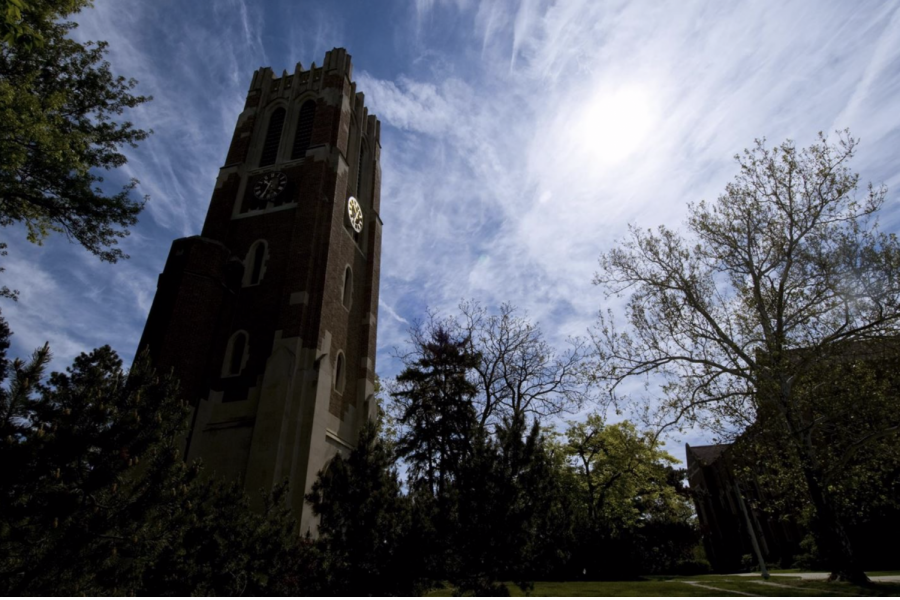Today’s weather forecast is predicting cloudy skies with a high of 36 degrees and a low of 23 degrees.
Trump’s withdrawal from Paris Climate Agreement sparks concern
On his first day in office, President Donald Trump’s administration announced that the U.S. would withdraw from the Paris Climate Agreement. It is the largest international climate agreement, a treaty between approximately 190 countries committing to reducing carbon emissions and limiting global temperature increases to 2 degrees Celsius, according to the United Nations.
This is Trump’s second time withdrawing from the agreement, the first time being during his term in 2016. It will make the U.S. one of four countries to be excluded from the agreement.
Whether or not the U.S. is involved, Michigan State University James Madison College professor and expert in environmental justice Daniel B. Ahlquist said we need a stronger and more binding agreement. However, he claims that is unlikely, especially with the U.S.’s withdrawal.
Despite its shortcomings, Daniel said the Paris Climate Agreement is the best we’ve got. He said key climate tipping points — thresholds that, if exceeded, would lead to great changes and major shifts in the Earth’s climate as identified by the International Panel on Climate Change — are approaching.
Trump’s withdrawal from the climate agreement could have effects on the entire country, including Michigan. According to Daniel, specific effects of climate in Michigan could be more radical and unseasonal weather, hotter summers, stronger storms, more severe droughts and floods, changing ranges of pests and disease vectors and many more effects.
In addition to withdrawing from the agreement, Trump has shut down the White House’s website on the National Climate Task Force. The U.S. government’s desire to extract minerals and fossil fuels and do other activities that can increase greenhouse gasses and ozone layer depletion is also a worry.
Weir on MSU’s campus faces possible removal
Dams and weirs, low-rise barriers built across a river or stream to control the flow of water, across Michigan are being removed as their useful life ends. Michigan’s Department of Natural Resources is prioritizing grants to extract the dams and weirs rather than restoring them.
“Fish need to migrate up and down streams and sometimes use streams to migrate between wetlands or lakes as part of their life cycles,” Michigan’s DNR Joe Nohner said. “Often they’re laying eggs upstream or in a wetland. Dams and other fish passage barriers block their ability to make that migration and thus make it difficult for them to successfully reproduce.”
Nohner said while some fish are capable of jumping over small barriers, these barriers negatively impact some fish populations.
The difference in habitats upstream of a dam can be quite drastic from the ones downstream, senior academic specialist in the Department of Fisheries and Wildlife at Michigan State University Jo Latimore said.
Latimore said fish populations aren’t the only thing affected by blockages, materials like sediment and silt can also become stuck and cause a build-up.
Because the water cannot hold these materials anymore, the bottom of the river above the weir becomes muddy and muck-filled. However, the healthier habitat for aquatic animals includes gravel and rock. Latimore said the area above the weir was difficult to study because it was much deeper than below it and the sediment build-up made surveying hard.
While it was difficult to understand the health above the weir, she assumes the slow flow and depth of the area makes for an undesirable and unhealthy habitat for the clams and vertebrates. Latimore said these blockages can affect the river in more areas than just where the structure is placed.
However far the river is affected depends on the height and the landscape around the block, but its removal would certainly help the habitat, Latimore said.
MSU’s Infrastructure Planning and Facilities is attempting to get one of the grants from the DNR, vice president for strategic Infrastructure, Planning and Facilities, Daniel Bollman said.
Bollman said there are three main reasons to remove the weir at MSU: ecology, recreation and flood risk. He said he knows about the unhealthy habitat the weir creates for aquatic species and that canoeing and kayaking would be easier for those who use the river for restoration, but flooding has also increased over the past couple of years and the weir makes it more likely to happen.
He said the weir was originally built in 1878 to create a reservoir to pump water for drinking and extinguishing fires. According to past research done by a biosystems engineering senior design team at MSU, the weir was also used for heating the dormitory Williams Hall. However, the weir is not used for any of these reasons anymore.
Nohner said that there are several blockages in the state that presently don’t serve any purpose and are often posing risks to the communities they reside in.
Nohner said the DNR is seeing more interest in removing dams than they have the resources for. The grants are competitive to receive and the agency looks at the removal from all angles to decide which ones are the most necessary. Whether MSU receives one of these grants or not remains to be seen.
Based on original reporting by Reiel Ghiglia and Anna Barnes.


















